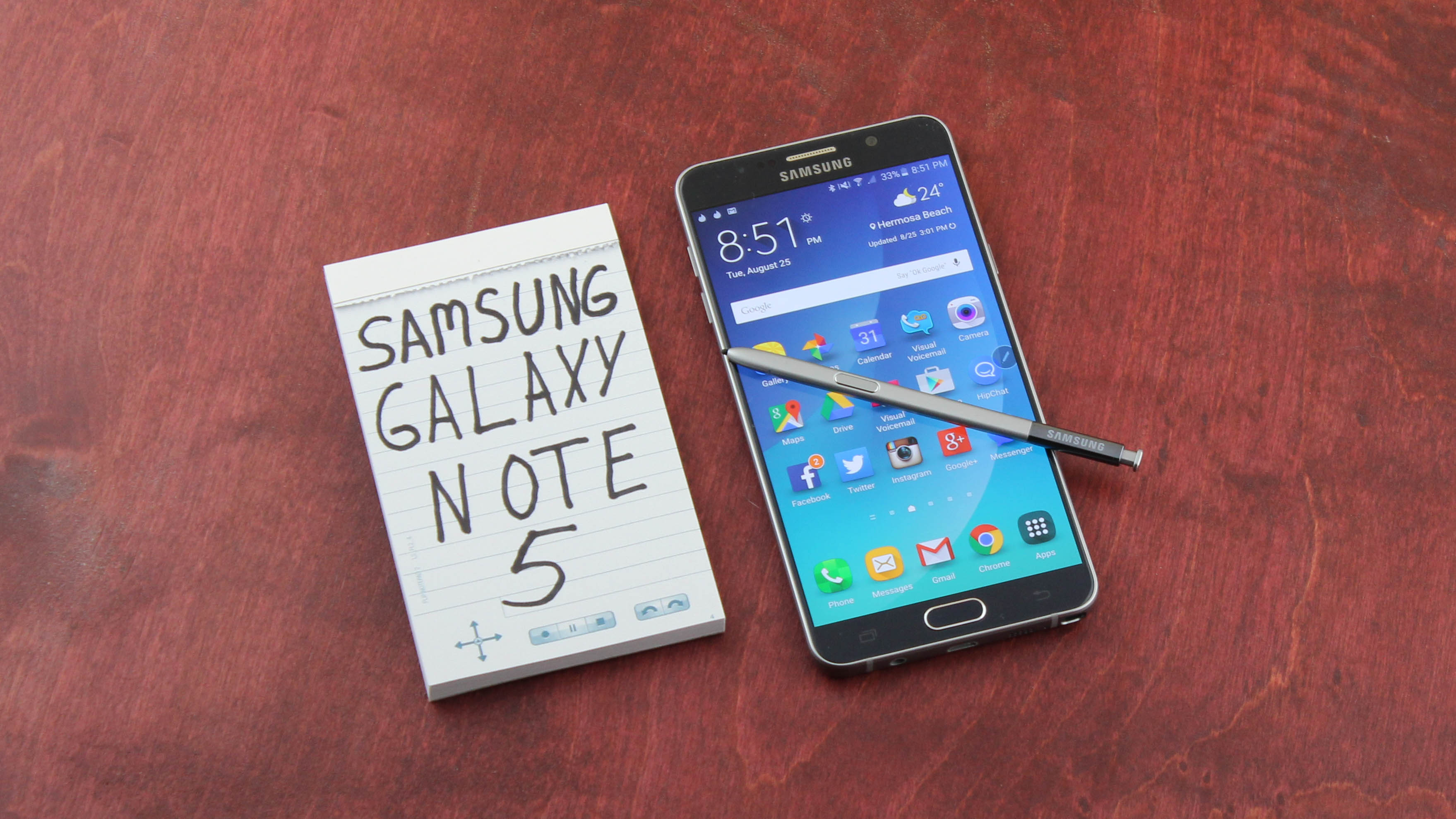Why you can trust TechRadar
The Samsung Galaxy Note 5 is a beast of a phone in size and performance, since it inherits the chart-topping Galaxy S6 internal specs, then tweaks them a bit for even better results.
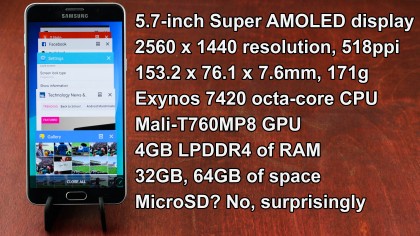
The company is really giving Qualcomm a run for its fleeting money, because its Exynos 7420 octa-core chip continues to outpace every other Systems-on-a-Chip in multicore processing. And it does it while not getting hot or bogged down, like the troubled Snapdragon 810.
The Note 5's octa-core chip is the same, with a combination of a 2.1GHz quad-core chip and a 1.5GHz quad-core chip and a Mali-T760 MP8 GPU. What's different here is that Samsung added to the memory, with 4GB of LPDDR4 RAM, instead of the 3GB found in S6 And S6 Edge.
The Samsung Galaxy S7 and S7 Edge have ratcheted the specs sheet numbers up to 4GB of RAM since the Note 5 launch, and even newer Android phones like the OnePlus 3 top out at 6GB of RAM. There's still plenty to like about this Samsung's performance one year on.
Performance
Samsung fit an extra 1GB of RAM in this phone – meaning it can handle more tasks at once – and it really shows through our best GeekBench 3 scores in 2015. While the Samsung Galaxy S6 topped the charts at an average score of 4,849, our three most recent Note 5 benchmarks averaged 4,975. One of the tests even surpassed the 5,000 mark.
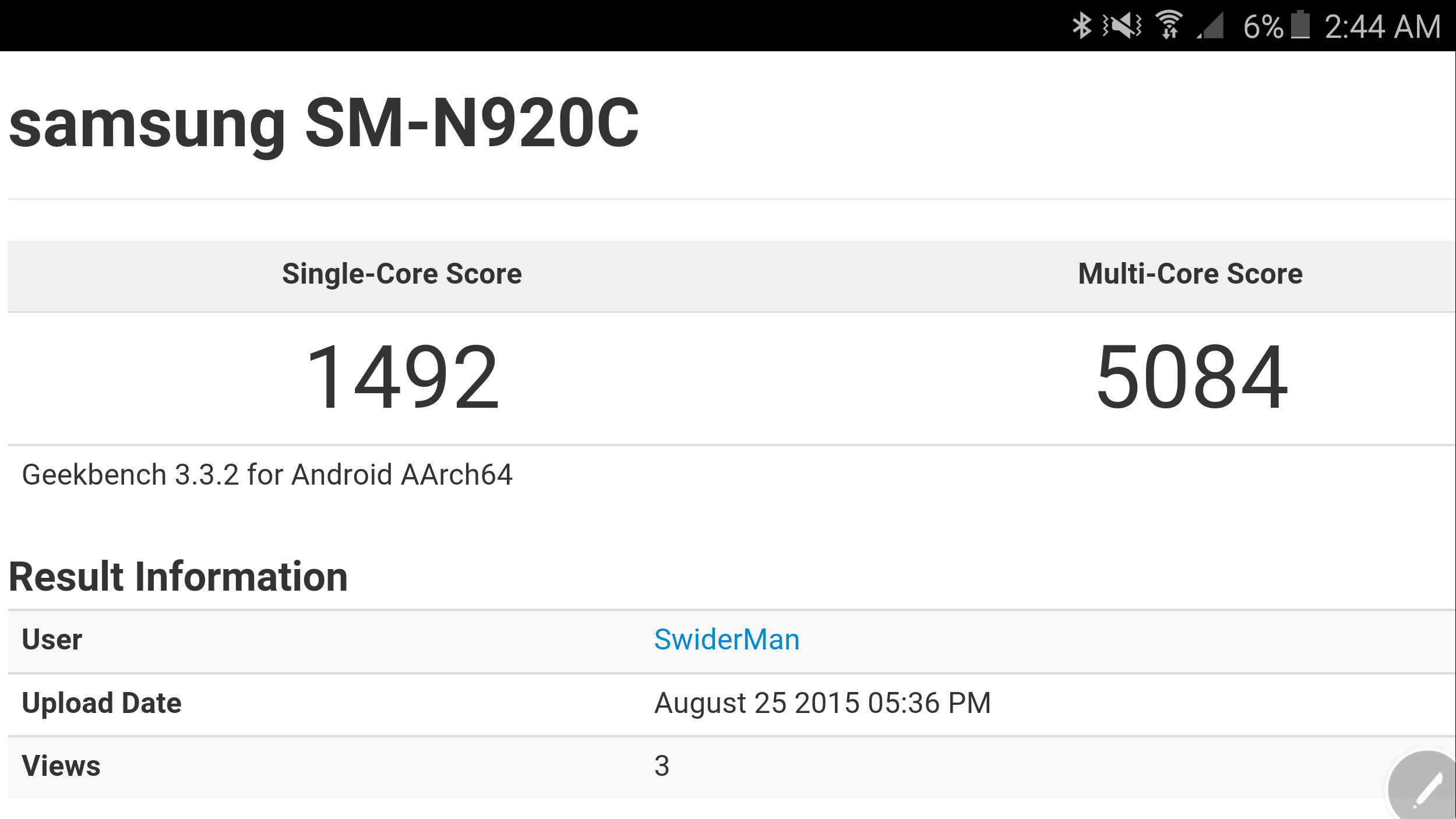
That is a decisive blow to other phablets out there, too. The 6-inch Google Nexus 6 managed to score 3,294 in the same benchmarking test, while the iPhone 6 Plus took a snooze at 2,911. That may be plenty fast enough for even iOS 9, but this Android phone is able to handle way more at once.
Samsung's Exynos 7420 processor, combined with 4GB, seems like an unstoppable force, and is a specs trend that should continued with MWC 2016 launch of the Samsung Galaxy S7. Qualcomm launched its Snapdragon 820 processor for the US and Chinese version, while Samsung used its own Exynos again in the UK and everywhere else in the world.
The only reason you may see slowdown from the Note 5 is if Samsung's improved, but still imperfect, TouchWiz interface takes a few extra seconds to jam in another menu animation.
Internal storage
Local storage, the other type of memory, is more of an issue for power users, with 32GB and 64GB configurations. You won't find a 128GB Samsung Galaxy Note 5.
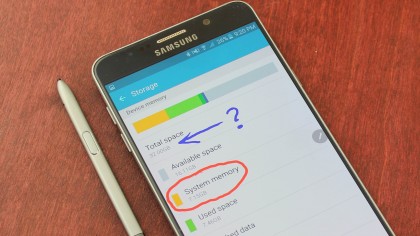
That's problematic for three reasons. First, there's no microSD card slot, something that a vocal portion of Note fans have flipped out over. (Just look at the comments on our launch coverage.) Second, new RAW photo options and returning 4K video capture settings can eat up space. A 32GB drive isn't what it used to be, with 30MB uncompressed photos and 2160p video files. Third, actual user-accessible storage is 24.85GB on my 32GB Galaxy Note 5 review unit. The system memory takes up 7.15GB on its own.
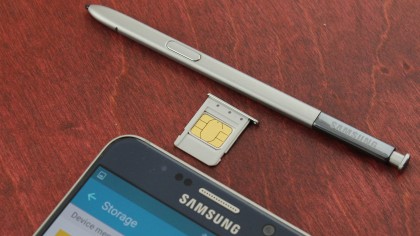
What's shocking is that the SIM card tray finally switched from a micro SIM in the back cover on the Note 4 to a smaller nano SIM in the frame of the Note 5. Yet Samsung kept this ejectable tray fairly big – what looks to be the same size as micro SIM tray with huge borders.
I get why the battery is sealed with this airtight design, and I get why the Galaxy Note 5 isn't waterproof, like 2014's Galaxy S5 and this year's Galaxy S7 Active. But Samsung could have easily added a microSD card slot here, instead of a larger-than-necessary SIM tray. This is something that's fixed in the new Samsung Galaxy Note 7.
Call quality, reception and boot times
Phones are sometimes used to make phone calls, believe it or not, so we still evaluate that, too. The Note 5, does just fine with both call quality and reception.
Testing out the Samsung phone through the T-Mobile network in an area with good coverage, I was able to hear the caller loud and clear. It gets even louder when pressing the on-screen extra volume button, just in case your caller is a low talker and every word is important. The speaker phone accomplishes the same, even if the speaker shouts out the wrong direction, from the bottom of the phone's frame.
Boot times on this phone are always acceptable, taking 28 seconds to startup on average. The even bigger Google Nexus 6 still requires an excruciating minute and a half when first pressing the power button. Samsung packs more into the Galaxy Note 5 and takes a third of the time.
Current page: Specs and performance
Prev Page Samsung Pay, Display and S Pen Next Page Android 5.1.1 and apps